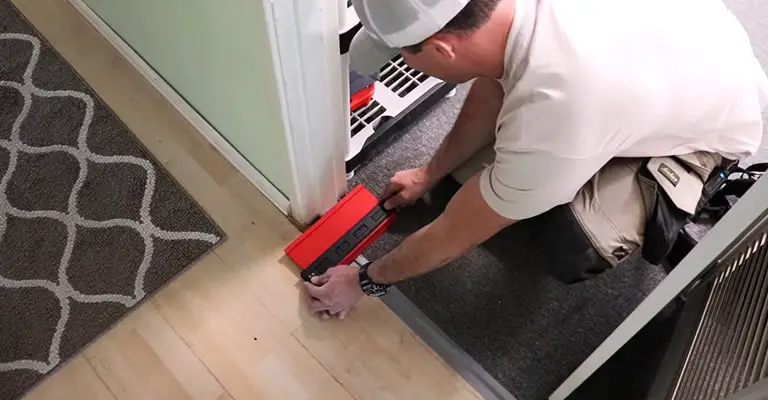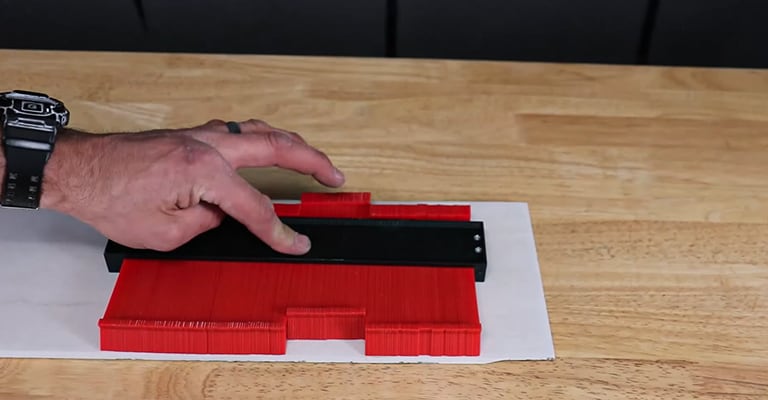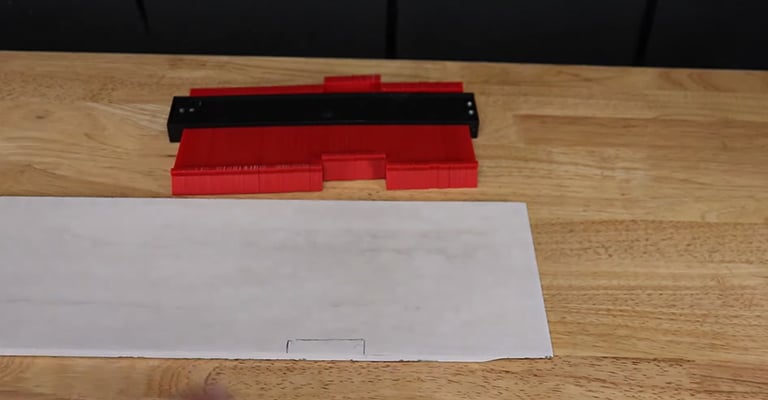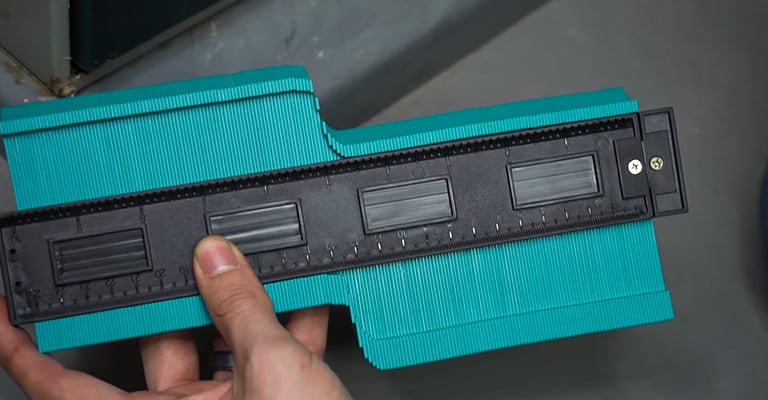For artifact jobs, you need to be just at the accuracy point where there are no possible visual faults. The lesser the uneven curves the more beautiful and praiseworthy it becomes. Also, the precisions show its quality and a handful of expertise’s struggle.
Not only arts and creating new and diverse shapes, but also in woodworking and metalworking it is necessary to have the perfect measure of edges so alignments and merging go smooth. Even if the surface is hard or not, it is always tiresome to cut multiple times to be in shape. And that’s why we are to introduce a tool and that is how to use a contour gauge.

In this post we'll cover:
Possible Queries Regarding a Contour Gauge
Being just familiar with the term “contour gauge” you might not know how to operate it. It’s pretty simple and the overall setup is just some plastic or sometimes metal pins aligned side by side parallel and move vertically when pushed force to reshape.
How Does a Contour Gauge Work?
There are very fine cut pins almost 170s in numbers appx and the length is near 10 inches. Although the 6-inch vs 10-inch debate is always there. Anyways, they are also familiarized as the profile gauge for being profiling or mimicry the shape of a certain component.
Place the gauge to a surface curve you need to restore shape, and press the gauge against the object. This is how it works. There is a lock system to lock the shape and therefore you get just the shape you need to work with.

How to Use a Contour Gauge Duplicator?
According to a profile gauge’s work specification, it is a blended name “duplicator”. As you can see this can simply take the shape of an edge or unusual shape without any distortion, so you simply can define it as a duplicator. The mechanism of a duplicator is no different other than just an entitlement.

How to Lock the Contour Gauge?
Few gauges don’t come with any advanced locking system. And consequently, when cannot lock a shape duplicator it’s simply a mess more than a helping hand. The pins will easily switch their vertical position and you lose the shape.
Some advanced gauges have proper locking handles and the tightness can be adjusted according to choice. The locks are mostly situated in the side portion vertically with the pin cover (scale). Sometimes a single press system is included else you’ll have to adjust your sizes with manual clicks.
The lock system is as important as the pin shapers. So basically, if there is no solid lock then the pins are of no use. So between locking and regular contour gauges, the former has got the upper hand.
How to Use a Profile Gauge for Flooring?
For flooring cases, precision cuts are pretty inevitable. As you can see a slight miscalculation, in this case, might give the whole floor an odd appearance. Again if you’re fixing your tiles or adding something new to the tiles you’ll need to have a curve fit up to accuracy.
So simply place the gauge in the edges you need to copy and lock it. Put the gauge shape on the board or tile and mark the lines. Get a cut and you’re just ready to collab!
How to Use a Marshalltown Contour Gauge?
Among plenty of choices, Marshalltown has a very good recommendation for being a most precise size copier. It’s made with visible bluish plastic (ABS) pins and the surface you’ll be copying won’t get any scars. It’s not that stiff while shaping but holds the shapes successively till you’re done with it.
This is how evenly the teeth are aligned and it’s remarkable like any gauge. But this specification will not need extra pressures precisely. Just a little push is enough to mimicry.
How Contour Gauge Used in Woodworking and Artifacts?
A profile gauge was formulated to aid the shapers and later on got diversely commended. You are barely in need of a professional for précising your measurements.
The wood-shapers and pottery industry use this gauge too frequently. As you can see the designs are very variant and the shapes are not regular. So every single time when they are to adjust the merging or any kind of collaborations, they need a contour gauge. They seem to use slightly different types of gauge built-in with the cut machines.
Some references might help you get a better idea of contour gauges and we have added some links.

Conclusion
A contour gauge is simple regular basis equipment and if you’re a pro or just a homie, it will serve you with just the accuracy. Dependence on multiple shapers can be minimized with the help of a profile gauge. Yes, it is just YOUR tool. Just know how to use a contour gauge.
The Gauge comes with a scale. More specifically a scale that holds all the pins evenly. The pins have blunt big heads, for not streaking the surfaces and also don’t let the pins runoff from the alignment. So without any kind of renewal or maintenance headache, you can rely on this.
I'm Joost Nusselder, the founder of Tools Doctor, content marketer, and dad. I love trying out new equipment, and together with my team I've been creating in-depth blog articles since 2016 to help loyal readers with tools & crafting tips.
